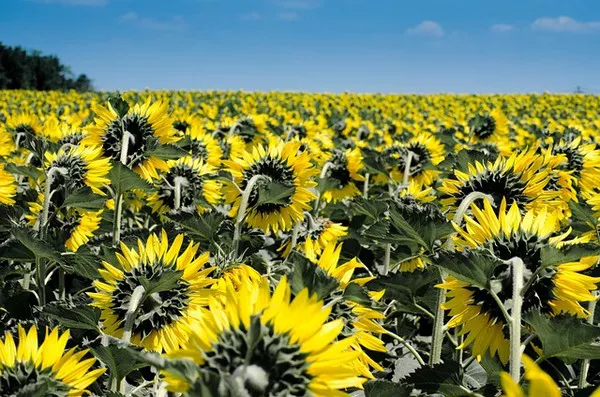Flowers have long been revered for their beauty, symbolism, and ability to brighten up any space. Among the diverse array of flowering plants, annual flowers hold a special place due to their unique life cycle and vibrant blooms. In this comprehensive guide, we delve into the world of annual flowers, exploring their definition, characteristics, benefits, and popular examples.
What is Annual Flowers
The term “annual” in botany refers to a specific life cycle of plants. Annual flowers are plants that complete their entire life cycle – from germination to flowering and producing seeds – within a single year. Unlike perennial flowers, which live for multiple years, annuals complete their life cycle within a relatively short span. This life cycle adaptation is essential for annuals to reproduce and perpetuate their species in environments with fluctuating conditions.
Characteristics of Annual Flowers
1. Rapid Growth:
Annual flowers are known for their quick growth rate. They sprout from seeds, develop into mature plants, produce flowers, and set seeds in a matter of months. This rapid growth allows them to take advantage of favorable conditions during a short period.
2. Abundant Blooms:
One of the most appealing features of annual flowers is their abundant and often vibrant blooms. These flowers are nature’s way of ensuring pollination and the continuation of the species. The profusion of blooms also adds color and charm to gardens, landscapes, and floral arrangements.
3. Varied Colors and Shapes:
Annuals come in a wide range of colors, shapes, and sizes. From delicate pastels to bold and bright hues, annual flowers cater to every aesthetic preference. Their diverse forms make them versatile for various gardening styles and design purposes.
4. Adaptability:
Annual flowers have evolved to adapt to changing environmental conditions. This adaptability allows them to thrive in various climates and soil types, making them accessible to gardeners around the world.
5. Seed Production:
Since annuals complete their life cycle within a year, they prioritize seed production for future generations. Once the flowers have been pollinated, they produce seeds that can be collected and saved for the next growing season.
Benefits of Growing Annual Flowers
Continuous Color: Annual flowers are a fantastic way to ensure a continuous display of color in your garden or landscape. Their rapid growth and blooming cycle mean that you can enjoy new waves of colorful flowers throughout the year.
Design Flexibility: Due to their varied colors, shapes, and sizes, annual flowers offer gardeners immense design flexibility. Whether you’re creating a monochromatic bed or a vibrant mix of hues, annuals allow you to experiment with different combinations each year.
Quick Garden Transformations: If you’re looking to revamp your garden’s appearance without committing to permanent changes, annual flowers are the perfect solution. They can quickly transform the look and feel of your outdoor space with their seasonal beauty.
Container Gardening: Annual flowers are excellent candidates for container gardening. Their adaptable nature and compact size make them ideal for adorning balconies, patios, and windowsills with bursts of color.
Easy Seed Saving: Collecting seeds from annual flowers at the end of the growing season is a simple way to save on gardening costs. These seeds can be stored and sown in the following year, allowing you to have a steady supply of new plants.
Popular Annual Flowers
Marigold Flower (_Tagetes spp.): Marigolds are beloved for their cheerful orange and yellow blooms. They are known for their pest-repellent properties, making them a popular choice in vegetable gardens.
Petunia (_Petunia spp.): Petunias are available in a wide range of colors and patterns. Their trumpet-shaped flowers add elegance to hanging baskets, containers, and flower beds.
Zinnia (_Zinnia spp.): Zinnias are prized for their vibrant, daisy-like flowers. They come in various heights, making them versatile for different garden settings.
Cosmos (_Cosmos spp.): Cosmos flowers have delicate, feathery foliage and produce an abundance of daisy-like blooms. They add a touch of grace and beauty to any garden.
Sunflower (_Helianthus annuus): Known for their towering height and large, sun-like flower heads, sunflowers are a favorite for their cheerful and impressive appearance.
Alyssum (_Lobularia maritima): Alyssum is valued for its fragrant, tiny flowers that often form a carpet-like cover in flower beds and borders.
Nasturtium (_Tropaeolum majus): Nasturtiums feature bold, unique flowers and round, lily pad-like leaves. Both flowers and leaves are edible, adding a peppery flavor to dishes.
Tips for Growing Annual Flowers
Selecting the Right Location: Choose a planting location that matches the sunlight requirements of your chosen annuals. Some prefer full sun, while others thrive in partial shade.
Preparing the Soil: Prepare the soil by amending it with compost or organic matter to improve drainage and nutrient content. Well-draining soil sets the stage for healthy root development.
Proper Watering: Provide consistent and appropriate watering to ensure healthy growth. While some annuals prefer moist soil, others can tolerate drier conditions.
Deadheading: Regularly remove spent flowers to encourage continuous blooming. This process, known as deadheading, redirects the plant’s energy from seed production to new flower formation.
Fertilization: Feed your annual flowers with a balanced fertilizer to promote robust growth and vibrant blooms. Follow the recommended application rates for best results.
Pest and Disease Management: Keep an eye out for common pests and diseases that can affect annuals. Early detection and intervention are crucial to maintaining plant health.
Mulching: Apply a layer of mulch around your annual flowers to conserve soil moisture, suppress weed growth, and maintain a more consistent soil temperature.
In Conclusion
Annual flowers are a treasure trove of beauty, adaptability, and charm. Their ability to complete their life cycle in a single year, offering a burst of color and vitality, makes them an essential component of gardens, landscapes, and floral arrangements. Whether you’re a seasoned gardener or a beginner, the versatility and benefits of annual flowers make them a delightful choice for enhancing outdoor spaces and embracing the transient yet enchanting nature of nature’s cycles.


